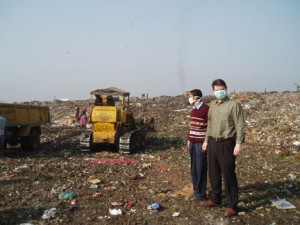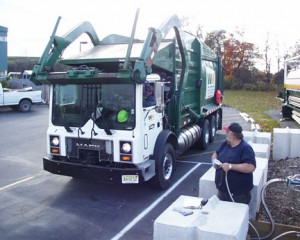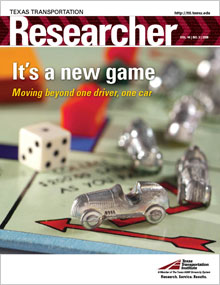Researchers work to capture landfill gases in India for use as an alternative fuel

The thriving province of Maharashtra is one of the most populous and prolific industrial centers in India. With a population of over 96 million residents, it is particularly vulnerable to energy demands and pollutant emissions. The Texas Transportation Institute (TTI) is currently leading an effort to evaluate the feasibility of using the gases generated by Maharashtra landfills as a fuel source for its refuse trucks and municipal buses. This research is being performed for the U.S. Environmental Protection Agency (EPA) in partnership with the National Environmental Engineering Research Institute (NEERI), Mack Trucks Inc. and the Texas State Energy Conservation Office (SECO).
“Energy scarcity in all forms is a big issue in India,” says Deputy Director and Head of NEERI Rakesh Kumar. “Any attempt to get energy sources, particularly from unconventional sources, is most welcome. Landfill methane and its use for buses or refuse trucks provide an example of closing the loop of energy generation and its use.”
The world’s primary sources of energy are conventional fuels such as oil, natural gas and coal. The most apparent negative impacts of these conventional fuels are global warming, poor air quality and adverse health effects. Considering the impacts of conventional fuels, and their finite availability, noncoventional sources of energy are under development throughout the world.
One such nonconventional alternative is using landfill gas as a liquefied natural gas (LNG) fuel source for heavy-duty refuse trucks. The process involves converting methane gas, which is naturally produced by landfills, into LNG using a sophisticated chemical process. This process has been used with success in a pilot application in Burlington, New Jersey. The research team is seeking a solution to the problem of how to trap the escaping methane from Indian landfills.
“Landfills in India are very different from the sanitary landfills in the United States in that they are open pits without any gas collection systems,” says Joe Zietsman, TTI associate research engineer and director of the Center for Air Quality Studies. “In the sanitary landfills here in the United States, we cover them and are able to recover the trapped landfill gas using underground piping systems.”

The researchers are working on a design to capture the escaping methane by first gathering the refuse into a large pile, covering it with a thin membrane layer and finally collecting the gas using pipes inserted from above, as opposed to the conventional underground systems used in the United States. The captured landfill gas will then be “cleaned” through a sophisticated chemical process to produce the LNG that can be used as vehicle fuel. In addition to powering refuse trucks operating at the landfill, the LNG can also be used to power local bus fleets.
If implemented, this approach will provide the citizens of Maharashtra a cost-effective fuel source and cleaner skies. “Methane is a greenhouse gas that remains in the atmosphere for more than 10 years. It is also 20 times more effective as a greenhouse gas than carbon dioxide,” says Zietsman. “To be able to recycle this harmful gas into a clean-burning fuel is a win-win proposition for everyone.”
“The EPA’s Methane to Markets Partnership is an international initiative that advances cost-effective, near-term methane recovery and use as a clean energy source. The project initiated by TTI and its partners fits perfectly with the overall program, and we are very excited to see the results and hopefully move closer to implementation,” says Rachel Goldstein, EPA’s Methane to Markets contract manager.
